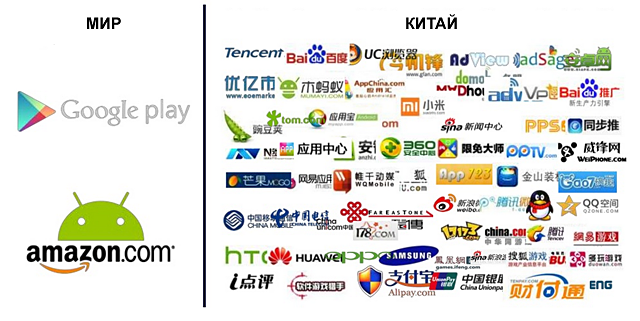China to bring $1.3 billion to mobile developers in 2013
The revenue of the mobile gaming industry in China by the end of 2013 will be about $ 1.3 billion, according to CocoaChina. However, this will not make it easier for Western companies to work on it.
Many people do not believe in the Chinese mobile application market as a source of income today. Piracy is too widespread, the situation with Google Play is unclear, the app store market itself is highly fragmented.

In theory, it is clear to everyone that for sales on it, it is enough to translate the application into Chinese, reach 50+ representatives of the stores, negotiate with each of them and release the game. The problem is that this is an extremely resource-intensive task, which also does not remove the risks.
At least, that was the case until recently. The Chinese publisher and game developer Yodo1 believes that the situation has changed. “Two years ago, people generated downloads, but not money,” says Henry Fong, the company’s executive director. – “The situation changed at the end of 2012, when large mobile operators, let’s say, restarted their billing programs. Monetization on Android has become noticeably better.”
Local developers have seen a sharp rise in their monthly earnings, Techrunch explains. One of these teams was CocoaChina, which announced a couple of weeks ago that its main project Fishing Joy earns $6.28 million monthly, most of this money comes from China.

“We are confident that in 2013 the earnings from the game in China will be from $ 10 million to $ 15 million per month. And this should not be ignored by the West,” said Lei Zhang, general manager of CocoaChina’s American office.
According to the forecasts of the latter, the volume of the entire Chinese mobile games market in 2013 will exceed the mark of $ 1.3 billion. At the moment, three mobile games already receive about $ 4.5 million a month in China per month.

So, yes, now there are not only users in this market, but also money. However, it’s still not worth rushing at him headlong. There were no problems with distribution and piracy. If, conditionally, the entire civilized Android world uses only two app stores – Google Play and Amazon (Opera, Yandex, etc., we don’t think they are small yet), then there are about 200 of them in China.

On the other hand, as in the global industry, according to CocaoChina, only five or six are worth attention: Qihoo 360, Wandoujia, 91 Mobile, UCWeb, Baidu and the China Mobile app store. As for money, most of the revenue (75%) comes from billing. Advertising is responsible for a significant share of 18%. The remaining 7% is accounted for by the Alipay payment system.
Not only the app store market is fragmented, but also the social media market. Because of this, promotion in China also turns out to be a significant problem. The authors of Teshgipsh, however, believe that even here the situation may change with the advent of a social messenger a la KakaoTalk or Japanese Line. Now QQ from Tencent is applying for his role. If it becomes widespread, it will be possible to feature applications through it. In the meantime, everyone who wants to enter the Chinese market needs, according to Yodo1, to work with one store to improve the findability of applications, with others to bring them to users and with third parties to get at least some money from it.

But Yodo1 believes that it is not worth being afraid of this, as well as turning away from the Chinese market. “If you don’t learn how to work with the market now, you won’t get a competitive advantage, you won’t leave your mark on the market, you will be an outsider when the market matures,” Fong stressed.
By the way, localization alone in the Chinese market is not enough. It is necessary to redo the game. This is exactly what Yodo1 and CocoaChina do when they take up the publication of a Western project in their native market. They require access to the code, and then greatly change the graphics and music in the game.
For example, Ski Safari’s daily revenue after such an adaptation in the Chinese market increased 220 times, amounting to $7800 on iOS and $7500 on Android. We were not inspired by the latest figures, but it is clear that this is much more than zero, and much better than if your application is downloaded from pirated resources.